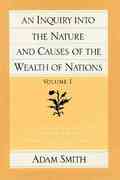Question
In this question, we'll explore a slight generalization of the utility max- imization problems we considered in section. Let's suppose we have an economic agent
In this question, we'll explore a slight generalization of the utility max- imization problems we considered in section. Let's suppose we have an economic agent maximizing utility over two goodsx1,x2, each with price 1. Furthermore, this agent's utility is given by the following form, called theStone-Gearyutility function: U(x1,x2)=(x11)^(x22)^1; 0<<1;1,2>0
Note that in the special case when1=2= 0, we recover the Cobb-Douglas utility function discussed in section (this may be useful in verifying your answers in (b)). The agent's total budget available for spending isw(you may assume that1+2w).
- (a)What is the agent's budget constraint?
- (b)Solve for the agent's optimal choice ofx1, x2. (Hint: is there a handy increasing transformation that would make this problem simpler to solve?)
- (c) Looking again at your answer in (b) and the original utility function, interpret the role of1in the utility function. What does this represent? (Hint: what would utility look like ifx1< 1?)
Step by Step Solution
There are 3 Steps involved in it
Step: 1

Get Instant Access to Expert-Tailored Solutions
See step-by-step solutions with expert insights and AI powered tools for academic success
Step: 2

Step: 3

Ace Your Homework with AI
Get the answers you need in no time with our AI-driven, step-by-step assistance
Get Started


